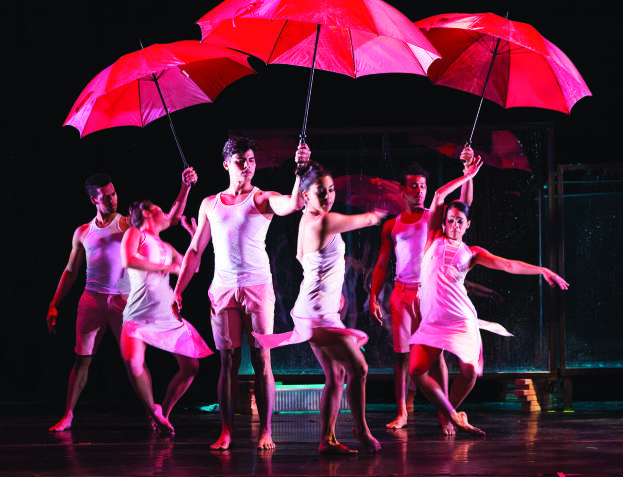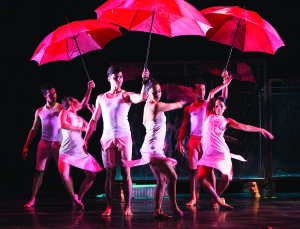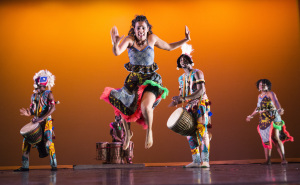
In a March 15, 2015 essay, “Growing Pains in Cuban Dance,” The New Yorker magazine’s critic Joan Acocella raised a timely question. “What effect,” she asked, “will Obama’s easing of trade and travel between the United States and Cuba have on the island’s most important artistic export, music and dance?”
Though Acocella appeared primarily concerned about the fate of the heavily government-supported Ballet Nacional de Cuba and the still small but budding modern dance companies, she realized that “with the reduction in foreign subsidies and the increase in actual trade, Cuban dance is going to become something else.”

How does Ramon Ramos Alayo, Artistic Director of Alayo Dance Company and the CubaCaribe Festival, that celebrates its 12th anniversary this year, see the future of dance in Cuba? Ramos is an optimist. “Through all the changes that we have undergone—under the influence of the United States, during the Bautista regime and under communism—” he says, “we never lost our identity.” In fact, he believes that “we became more of who we are.”
Ramos is the product of an arts developing approach that he deeply believes in. It is well known that in Cuba the government reaches out to children who show potential for the arts. Ramos was one of them. He started to study dance in Santiago de Cuba at eleven, even though at first he didn’t want to for all the reasons that some boys are reluctant. After training in folklore, ballet and modern, he was admitted to Havana’s elite National School of Art, where he earned a MA in contemporary and traditional dance. He sees the lower level schools with their superb teachers, of which there are many in the country, as the repository and wellspring of Cuban dance. “We have these schools, and they instill the culture. As long as they keep those schools free, we are not going to lose our culture,” he says.
One of the pleasures he derives from his annual trips to Cuba—his dancers in tow for Cuba Camp—is to see how the system still works. Though he was the only person in his family to become an artist, now two of his nephews are dancers, and, he says,“it’s so great to see that the kids watching ballet are all black.” Being a dancer, he notes with some pride, “is a profession in Cuba. You can make a living at it.”
Does he think the arts—which are so integral to Cuban culture—can break barriers between people? The answer, of course, considering how jammed his salsa classes at Dance Mission are, is unequivocal. “When you dance,” he believes, “it’s the only place where you can be who you are.” What about audiences? Will they take away more than an evening of entertainment? He illustrates his point with a recent experience.
“No too long ago I performed three dances in an elementary school in Oakland. It’s a private school, most of the kids were white,” he recalled. “Using texts by each of the subjects, one of them was about Martin Luther King Jr., one about Malcolm X, the other about President Obama. The principal afterwards told me that she had never seen her students so quiet and so attentive.”
For the first few years, CubaCaribe hosted bands as well as dance companies. But since 2009 the Festival has focused on the otherwise invisible threads that connect Caribbean and Afro-Caribbean music and dance and its Diaspora. Today CubaCaribe is an ethnic dance festival of its own.
Though showcasing many of the same companies, Ramos shifts the focus each year. In 2013 it was “Tribute to Our Teachers”; in 2014 “Helping Tradition Thrive and Evolve”; and in 2015 “In Search of Soul.” In order to draw attention on the centrality of Cuba in that part of the world, this time around he asked company directors about the influence of Cuba on their artistic practices. This year’s festival goes under the name of “Cuba on My Mind.”
He mentioned that before the embargo, the connection between Cuban and North American culture was strong. It would have been unthinkable to have popular dancing “without the Rumba, the Cha Cha and the mambo—which came by way of Mexico,” he points out. Furthermore, Ramos notes, “Cuba may have been isolated from the United States, but not from the rest of the world.” (In fact it had relationships with 160 countries, including many in Latin America and Africa.)
In this year’s line-up of fifteen companies who will perform at the Festival’s home base, Dance Mission Theater, Laney College Theater and (new this year) Brava Theater, many names will sound familiar, but Ramos also is increasingly broadening this reach.
For his own Alayo Dance Company he is choreographing a contemporary sextet with, at first glance, fierce women popping up from push up positions and men with rocking shoulders and uttering hands. He also again commissioned former colleague from Havana Nelson Reyes because “I like the way he uses movement and the way he works with the dancers.”
The third piece on Alayo’s company will come from Krissy Keefer, Artistic Director of Dance Brigade. She remembers raising money for El Salvador and Nicaragua in the early 1980’s, her (still) deep feelings for the Cuban Revolution and the music of that era, the Nueva Cancion-the folk-inspired socially conscious music. She has been listening and choreographing a sextet.
We may associate Los Lupeños de San Jose with swooping skirts and zapateo, but, points out Tony Ferrigno (manager of the company’s parent non-profit, Cashion Cultural Legacy) , “Yucatan and Vera Cruz are influenced by Caribbean music and dance. We still have Afro-Mexicans in various parts of the country.” He will close the selection of dances from those areas with the Danzon, a direct “gift” from Cuba where, however, it has disappeared.
Mind over Matter is a Hip Hop company. So is Nicole Klaymoon’s Embodiment Project. She was drawn to the invitation to be part of the festival in part because of her friendship with and admiration of Ramos as a man and as a dancer. By press time, she hadn’t decided on which way to go. But she was thinking along the lines of House Dance—seeing in its openness to difference and individuality strike a resonance with Ramos and Cuban dance.

For Duniya Dance and Drum Company, the connection and influence of Cuba on its work is perhaps subcutaneous but nonetheless real. While its repertoire also dances from the Punjab, its African dancers are from Guinea. Post-Colonial Guinea and Cuba once had close cultural relations, with the African dancers traveling to Cuba. No doubt they brought back what they learned into their own practices. The program will include Liberate, created for the country’s Independence celebration.
Tika Morgan trained in the Silvestra Dance Technique, a modern Brazilian dance form. She creates fusion dance. Writing from Cuba, she affirmed “the African Diaspora through the Caribbean and the Americas is my greatest love, so dancing in Cuba is both imperative and amazing.” For Tika Morgan Dance company’s first appearance at CubaCaribe, she is planning a work for nine dancers.
Also making their debuts this year will be Cuicacalli Dance Company and Gafiera Brasil. Haitian master drummer Daviel Brevil will give a lecture/demonstration on April 14th at the Museum of the African Diaspora. George Ibar Veranes from Santiago/Cuba will offer Salsa/Timba workshops.
This article appeared in the April 2016 issue of In Dance.


